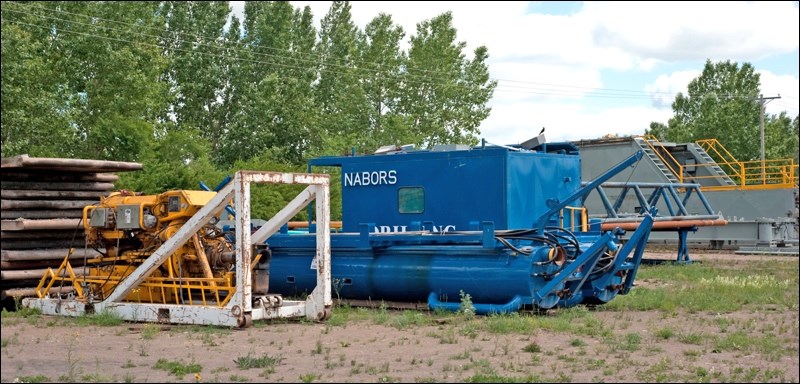I have spent a lot of time looking at numbers over the years – numbers of active drilling rigs, oil production, investment in the patch, etc. A significant segment of my effort is sorting the wheat from the chaff, picking out the key figures of what matters.
One really good source is the North Dakota Department of Mineral Resources. Their director, Lynn Helms, has been director of the department quite literally for decades. And as a “director,” he likes to make the allusion to Hollywood, so his regular report is known as the “Director’s Cut.”
He’s actually a very affable guy who starts every speech with a pretty decent joke, so he’s entitled to call it whatever he wants. He’s overseen the growth of North Dakota from 120,000 barrels per day (bpd) in 2007 to 1,424,555 barrels per day today.
I wrote out that last figure instead of rounding it off because there was something about it that struck me. I recall a conversation with a senior Saskatchewan government official about seven years ago at the Lloydminster Heavy Oil Show. He pointed out that, for much of the prior decade, Saskatchewan’s oil production had remained relatively flat at about 425,000 barrels per day. And that, he noted, was actually quite an accomplishment, given the natural declines every oil well has.
North Dakota is now producing a million barrels a day more than what we were so proud of back then.
I just came across an interesting resource. On the provincial Saskatchewan.ca website, there is a dashboard that includes oil production statistics (where have you been these last 11 years? Did you exist and I not know it?) You can find it at https://dashboard.saskatchewan.ca/business-economy/business-industry-trade/oil-production
Unfortunately it speaks in cubic metres, whereas the oil industry often uses barrels. The most recent data shows 2,396,696.8 cubic metres in the month of May. My math says that’s 486,282 barrels per day. If my calculations are correct, it corresponds very closely with the little infographic on the page that says, “In 2015, the province produced 486,000 barrels of oil per day and shipped about 65 per cent of that production to the United States.”
So, we have now finished five years of downturn, and four years ago we were producing pretty much precisely what we are now. All told, that’s not bad given the aforementioned natural declines.
But we’re also running a lot fewer rigs. I routinely use Rig Locator, a sister publication within our parent company, for my rig analysis. It says on Aug. 23 we had 45 drilling rigs working. That’s about half of what we had prior to the downturn. Yet we’re still producing the same amount of oil.
One of the interviews I did this month pointed out a similar thing. Josh Biggs, owner of Top Torque Services Ltd., said, “You keep hearing all the buzz how the States is booming, but I disagree with that. I look at Baker’s rig count. We’re five years into this downturn. When the rig count drops off, it’s a great time to look. North Dakota, five years ago, 185 rigs. Now? 47. So they’re at 25 per cent of what they were at.”
Baker’s numbers differed from the Director’s Cut, which said 61 rigs, but close enough. Biggs’ point is there aren’t nearly as many drilling rigs out there.
Canada’s drilling rig fleet has shrunk from 800 five years ago to 549 today. And now the whole, much-reduced fleet, nation-wide, is currently running at only 29 per cent capacity.
So what does all this tell us? Not good news if you’re in the drilling business. You, and your competitors, have largely worked not many, but most of your industry, out of a job.
That’s right. Most. When just 29 per cent of a fleet that is already down by 31.4 per cent is working, most of the drilling industry is out of a job.
Rigs have simply become too efficient for their own good. The last time I spoke to Helms, a year ago at the Williston Basin Petroleum Conference, he noted that the rigs in their state have become 300 per cent more efficient. It used to take an average rig a month to drill a North Dakota Bakken well. That same rig is now drilling three wells in a month. (I should add, a North Dakota Bakken well is not only twice as deep vertically, but twice as long horizontally, compared to a typical Saskatchewan Bakken well.)
I’ve been told that advances in bits, with polycrystalline diamond cutters, solids control, and much larger mud motors have all played a factor.
But the sorry conclusion of all this is that the Canadian drilling rig fleet is still overbuilt by a very large measure. If we can keep producing the same amount of oil with so few rigs, eventually the conclusion will be that we don’t need that many rigs anymore.
I’ve heard tales of long ago of trees growing through rig substructures. I’m pretty sure that’s happening today with the idle rigs, many of which haven’t spun a pulley in years.
A lot of that iron is going to be cut up. A lot of capital is going vanish in stranded assets.
I understand one rig recently sold at auction for the price of what just one key component cost. They essentially got the rig for free.
I don’t know when I will see a new drilling rig in Saskatchewan, but I expect it will be a long time from now, while the fleet continues its merciless cull.
Brian Zinchuk is editor of Pipeline News. He can be reached at [email protected].
��




